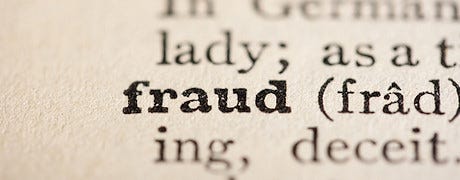July 13, 2012

All this week the market has been in turmoil over another brokerage firm going belly up and hitting customer segregated funds. While the National Futures Association is working to tighten rules on the issue, the rest of the trade is watching the unwinding of Peregrine Financial Group. As more details become available, it's like watching a soap opera.
The FBI affidavit filed this week in the U.S. District Court of for the Northern District of Iowa offers fascinating details on the case. PFG filed for a Chapter 7 bankruptcy on Tuesday after the firm's founder - Russell Wasendorf, Sr. - was found trying to commit suicide outside the firm's headquarters Monday morning.

PRIDE DRIVES FRAUD: Russell Wasendorf, Sr., signs a statement that claims that his ego wouldn't let him admit he didn't have the cash and for years has been forging documents to keep regulators and banks at bay.
The affidavit filed by Special Agent William F. Langdon, is in support of a criminal complaint charging Wasendorf with making and using false statements in relation to his business. In Langdon's statement, he notes that when Wasendorf was found trying to commit suicide he had a suicide note and a signed statement on him. A copy of the statement was found with the suicide note by Russell Wasendorf Jr., the founder's son, and president of PFG. Here's an excerpt of the statement from Wasendorf Sr.:
"I have committed fraud. For this I feel constant and intense guilt. I am very remorseful that my greatest transgressions have been to my fellow man. Through a scheme of using false bank statements I have been able to embezzle millions of dollars from customer accounts at Peregrine Financial Group, Inc. The forgeries started nearly twenty years ago and have gone undetected until now. I was able to conceal my crime of forgery by being the sole individual with access to the U.S. Bank statement. The Bank statements were always delivered directly to me when they arrived in the mail. I made counterfeit statements with a few hours of receiving the actual statements and gave the forgeries to the accounting department."
The unwinding of this event is like reading a novel. Langdon's statement adds another excerpt that shows the financial distress and challenges Wasendorf Sr., was facing:
~~~PAGE_BREAK_HERE~~~
"…I had no access to additional capital and I was forced into a difficult decision. Should I go out of business or cheat? I guess my ego was too big to admit failure. So I cheated. I falsified the very core of the financial documents of PFG, the Bank Statements. At first I had to make forgeries of both Firstar Bank Statements and the Harris Bank Statements. When I choose (sic) to close the Harris Account I only had to falsify the Firstar statements [elsewhere in the signed statement Wasendorf noted that Firstar "eventually became US Bank"]. I also made forgeries of official letters and correspondence from the bank, as well as transaction confirmation statements."
In Wasendorf's statement he details how he used PhotoShop, Excel, scanners and both laser and ink-jet printers to make convincing forgeries of nearly every docment from the Bank. "I could create forgeries very quickly so no one suspected that my forgeries were not the real thing that had just arrived in the mail," the statement says.
Wasendorf acknowledges that he was able to conceal his efforts through care and his blunt authority in the organization. He says that if "anyone questioned my authority I would simply point out that I was the sole shareholder."
And Wasendorf detailed how he got around increasingly tighter restrictions from regulators like the National Futures Association: "When it became a common practice for Certified Auditors and the Field Auditors of the Regulators to mail Balance Confirmation Forms to Banks and other entities holding customer funds, I opened a post office box," Wasendorf said. "The box was originally in the name of Firstar Bank but was eventually changed to US Bank. I put the address "PO Box 706, Cedar Falls, IA…" on the counterfeit Bank Statements. When the auditors mailed Confirmation Forms to the Bank's false address, I would intercept the From, type in the amount I needed to show, forge a Bank Officer's signature and mail it back to the Regulator or Certified Auditor."
He says that when online banking became prevalent, he learned how to falsify online bank statements and the regulators accepted those without question.
And discrepancies there were. In the FBI affidavit, Langdon says that Wasendorf, Jr., obtained a purported bank statement for PFG's US Bank account titled "Customer Segregated Acct" and for the month ending Dec. 31, 2011 it showed an ending balance of $221,770,946.18. Subsequently, the affidavit says, Wasendorf Jr., obtained the bank statement for the same period directly from bank personnel that showed an ending balance of $6,337,628.14 - that's a $215 million difference.
~~~PAGE_BREAK_HERE~~~
The fraud was so deep that all accounting and audit statements were using the Wasendorf forgeries with no knowledge they were not directly from US Bank. The affidavit shows a range of forged balances that detail the long-term fraud perpetrated by PFG. The statement says the FBI talked to Wasendorf Sr., in the University of Iowa Hospital and he acknowledged that he wrote the signed statement using his own computer. The Langdon affidavit says that "Wasendorf estimated the amount of loss due to his fraud exceeded $100 million.
Langdon concludes: "Based on the above information, there is probable cause to believe that Russell Wasendorf, Sr., committed the crime of making and using false statements in a matter under the jurisdiction of the Government of the United States."
Regulators will be picking apart this fraud to determine ways to avoid this problem in the future. Electronic access to brokers' segregated accounts for verification is a step, created after the MF Global mess, that will help.
You May Also Like




